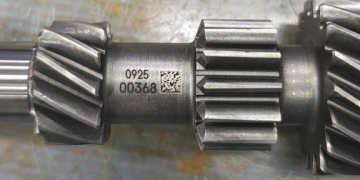Every drop that flows through an industrial pipeline carries with it a process; it carries risk. In industries like chemical manufacturing, oil and gas, and natural gas processing, acid corrosion silently eats away at the precision instruments that keep operations safe, efficient, and profitable. Emerson, a global leader in automation and process measurement, has spent decades mastering the science of flow. Now, the company is turning outward to invite innovators, material scientists, and engineers to tackle one of its toughest challenges: building the next generation of corrosion protection.
This is your chance to design a lining solution capable of shielding stainless-steel flow components from some of the harshest chemicals on Earth (sulfuric acid and sodium hydroxide) while meeting rigorous environmental and performance standards. The right solution could redefine what’s possible in industrial measurement, unlocking safer, more sustainable operations worldwide.
Winners won’t just earn a share of the $30,000 prize pool; they’ll gain a potential partnership with Emerson’s world-class R&D and manufacturing teams to bring their innovation from concept to commercial reality. Solving this challenge isn’t just about protecting metal; it’s about reshaping how entire industries flow.
Emerson
Emerson is a global technology corporation that was founded in 1890 in St. Louis, Missouri. The company initially began as a regional manufacturer of electric motors and fans. Emerson’s Automation Solutions segment is dedicated to helping manufacturers achieve industry-leading performance. Through its strategic growth, Emerson has acquired expertise and leadership in instrumentation, including flow and density measurement technology. Emerson provides flow products, including Coriolis flow meters, density meters, and viscosity meters, across its portfolio. Emerson Automation Solutions boasts the largest portfolio of flow products tailored to meet the installation demands for corrosive applications. The company has amassed more than 35 years of experience and hundreds of thousands of successful installations in such environments. To handle corrosive fluids, Emerson offers multiple wetted materials, including tantalum, alloy C22, and platinum, across its flow portfolio.
Coriolis
The License to Flow challenge focuses on protecting the internal components of Micro Motion Coriolis flow meters, which are crucial devices used to accurately measure mass flow and density. From these two measurements, the liquid volume flow can also be derived. The operation of a Coriolis meter relies fundamentally on vibration:
- Oscillation: The sensor uses dual parallel flow tubes. When the process fluid enters the sensor, it is split equally between these tubes. A drive coil stimulates the tubes to oscillate in opposition to each other at their natural resonant frequency.
- Measurement Principle: Magnet and coil assemblies, known as “pickoffs,” generate sine waves to indicate the tube motion. When fluid is moving, Coriolis forces are induced, causing the flow tubes to twist in opposition, which shifts the sine waves out of phase.
- Mass Flow and Density: The measured time delay, known as Delta T (ΔT), is measured in microseconds and is directly proportional to the mass flow rate. Simultaneously, the wave frequency of the oscillation indicates the fluid density. A change in liquid density alters the vibrating frequency of the tubes, similar to how a larger mass results in a lower oscillation frequency in a spring and weight system.
- Acid corrosion presents a critical challenge in industries such as chemical manufacturing, natural gas processing, and oil refining, significantly undermining the integrity and operational lifespan of process control equipment, specifically pipeline components. Existing solutions, like tantalum-lined components, while effective against certain acids, are prohibitively expensive for widespread use. Alternative materials, including stainless steel, nickel alloys, and titanium, fail to withstand long-term exposure to aggressive corrosive environments. While options such as Teflon lining exist, Emerson is seeking innovative alternatives, as progressing regulatory restrictions on environmentally persistent compounds, notably PFAS, are limiting their viability.
Without an effective resolution, industries face escalating risks of equipment failure, costly downtime, increased maintenance, and potential environmental hazards. The ideal solution must therefore ensure superior corrosion resistance, mechanical durability, and environmental compliance, while being adaptable to complex internal geometries in Emerson Coriolis sensors, including bends, bifurcations, and diameter reductions, crucial to sustaining safe, reliable, and economically viable industrial operations. The coating must maintain strong adhesion under occasional pressure cycles up to 1500 psi and a temperature range from -50°F to 400°F across a 20–30 year lifespan, while avoiding imperfections that could lead to pitting or delamination. It must not alter sensor performance, such as by affecting vibrating tube behavior or introducing significant pressure drop.
Develop a robust, compliant, and cost-effective lining solution, including the solution’s application, for stainless-steel flow path components that reliably protects against sulfuric acid and sodium hydroxide corrosion, enabling a multi-year service life under demanding industrial conditions.
Rising to meet this challenge, you will provide a 10-page paper and supporting materials that describe your solution, its material, how it can be applied, and its projected performance. If selected as a winner, not only will you be awarded a cash prize, you will have the opportunity to negotiate a partnership/contract with Emerson.
The following requirements define a solution to this challenge.
Must-have requirements:
Your solution, at a minimum, to be considered for a prize, must:
- Protect the stainless-steel base material from sulfuric acid corrosion and sodium hydroxide.
- Application of the solution has an even coating, with a thickness variation within 0.010 inches of the average.
- Prevent delamination even with occasional pressure cycles from zero to 1500 psi, and temperature cycles from 0°F to 150°F.
- Prevent delamination under low frequency (< 1000Hz), low amplitude (<0.01”) vibration
- Be compliant with REACH and RoHS and similar environmental standards.
- Be resistant to abrasion, erosion, and mechanical wear.
- Be applied only to the internal flow path surfaces; external coating is not permitted.
Desired features:
The following, if met, can result in a higher score for your submission:
- Have an average thickness of approximately 0.020 inches. Thinner and thicker coatings are acceptable, provided they meet the even-coating must-have requirements, and conclusively meet adhesion and porosity targets, ensuring no pitting or flaws that would allow acid contact with the base material.
- Offer flexibility for use across various component types and sizes.
- Accommodate a wide range of flow path configurations in our Coriolis sensors, including bifurcations, diameter reductions, and curved flow paths. The product line includes flow paths from quarter-inch to six-inch diameters with 180-degree bends and Y-shaped bifurcations.
- Be capable of passing industry-standard tests (ASTM G48 & NACE RP0274) for chemical resistance, adhesion, and mechanical durability.
- Prevent delamination with under occasional temperature cycles from -50°F to 400°F
- Demonstrate the elimination or minimization of PFAS or “forever chemicals”
How do I Win?
To be eligible for an award, your proposal must, at minimum:
- Satisfy the Judging Criteria requirements.
- Thoughtfully address the Submission Form questions.
- Be scored higher than your competitors!
Your Submission
- Your Solution: Describe your solution, its makeup, a clear explanation of your proposed material for the lining solution detailing how the material, upon application, will protect the stainless-steel base material from sulfuric acid corrosion and sodium hydroxide, the composition of the coating (e.g., polymeric, metallic, or hybrid coatings), its intrinsic properties that make it resistant to abrasion, erosion, and mechanical wear, and how it ensures long-lasting durability, even in dynamic flow environments with extreme conditions.
- Material: A table of materials/chemicals used and their volume, discuss the viability and availability of the proposed materials for practical implementation, demonstrate a clear strategy for minimizing PFAS and ‘forever chemical’ compounds. Show the elimination or significant minimization of these substances, going beyond basic regulatory compliance. Note: Solutions with significant or unmitigated presence that pose unacceptable long-term environmental risks will not be considered for an award.
- Application: Discuss the various applications of your solution, including details on the component types and sizes, and diversity of flow path configurations; demonstrate the versatility and adaptability of the application method, its flexibility for use across various component types and sizes, how it can accommodate a wide range of complex internal flow path configurations, including bifurcations, diameter reductions, and curved flow paths; How the application achieves an even coating, with a thickness variation within 0.010 inches of the average; Discuss any limitations the coating process has, such as minimum access size, Y-branch paths, or as-welded surface roughness (Explicitly mention its applicability to the full product range, which includes flow paths from quarter-inch to six-inch diameters, 180-degree flow path bends, and Y-shaped flow path bifurcations)
- Performance: Discuss the impact and proposed validation testing of your solution; How it reliably protects against sulfuric acid and sodium hydroxide corrosion, enabling a multi-year service life; Its ability to maintain adhesion and performance under thermal cycling and operational stress; demonstrate how it is capable of passing industry-standard tests for chemical resistance, adhesion, and mechanical durability.
- Supporting Documentation: Provide supporting documents, team resumes, an optional video, and CAD drawings – materials that help demonstrate all possible configurations of your solution and illustrate application thickness measurements at various points of application
Awards:-
A total of $30,000 USD in prizes will be awarded to the top submissions that best meet the challenge objectives and judging criteria. While the cash prizes recognize the most promising ideas, this challenge is designed primarily as a gateway to partnership and development with Emerson, one of the world’s leaders in flow and process measurement technologies.
- Grand Prize: $20,000
- Two Runner-Up Prizes: $5,000 each
Beyond the cash awards, top solvers will be invited to collaborate directly with Emerson’s engineering and materials science teams to advance their proposed solution toward testing and potential commercialization. Selected innovators could gain:
- Access to Emerson’s extensive testing and validation facilities.
- Technical feedback and mentorship from industry experts.
- The opportunity to co-develop and scale a corrosion-resistant lining solution across Emerson’s global product portfolio.
By participating, solvers position themselves not only for recognition but for a potential long-term partnership, where their ideas can transition from concept to market-ready technology, improving reliability and sustainability across critical industries worldwide.
As a part of this challenge’s shared IP agreement, Emerson reserves the right to contact solvers regarding their submission, solution, and intellectual property. This may include questions about your solution and potentially partnership opportunities for further work, development, or testing with Emerson.
Deadline:- 05-02-2026
Take this challenge








